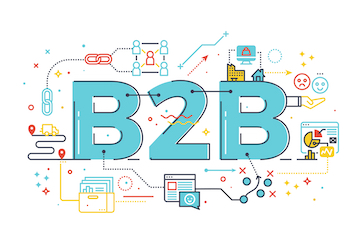Some estimates suggest the global business-to-business ecommerce market will be more than twice as large as retail ecommerce in 2020. Despite the market’s size, many B2B sellers lag behind B2C in ecommerce technology, features, and performance.
The sales are there. Worldwide, B2B ecommerce revenues are expected to reach $6.6 trillion in 2020, compared to projected B2C ecommerce sales of approximately $3.2 trillion, according to a 2017 Frost & Sullivan report.
…many B2B sellers lag behind B2C in ecommerce technology, features, and performance.
In the United States, wholesalers should generate between $1.8 trillion (Forrester) and $1.9 trillion (Frost & Sullivan) in ecommerce sales annually between 2020 and 2023. The next big milestone, $2 trillion in annual B2B ecommerce sales, won’t be far off.
These B2B ecommerce sales figures are evidence that purchasing professionals want to shop online. In response, manufacturers and distributors need to upgrade their ecommerce capabilities or potentially lose sales to better-performing competitors.
The Best B2B Ecommerce Platform
A manufacturer or distributor could start with a shortlist of leading ecommerce platforms. It could include Elastic Path, Oracle Commerce, SAP Commerce Cloud, Salesforce B2B Commerce Cloud, Shopify Plus, Magento, or any of a few dozen (or hundred) other functional and capable options in your quest to discover the best B2B ecommerce solution. You can always check out this article for more information on which ecommerce solution provider would be the best fit for you and your business.”
But you won’t necessarily be successful. Simply reading reviews or studying Gartner’s Magic Quadrant report for digital commerce platforms won’t help you discover the best one for your business. Instead, do some serious research, matching your organization’s needs and capabilities to the ecommerce software solution you choose. Here are a few ideas to help get started.
Business case. Launching or improving your company’s B2B ecommerce channel is a business decision. Ultimately your aim should be to generate a positive return on investment.
Be as specific as possible about what your B2B ecommerce platform is meant to accomplish. Should it facilitate the reorder process? Should it serve as a detailed online product catalog? Is its primary purpose to integrate with customer’s internal systems (i.e., punchout)?
Answer these questions before you move on.
Systems integration. Next, how will your ecommerce platform integrate with your existing enterprise resource planning software? How will you connect it to logistics programs, inventory management systems, marketing platforms, and similar? There are at least four options.
- Look for an all-encompassing platform that does everything but doesn’t particularly excel at anything.
- Connect best-of-breed services — ecommerce, email, ERP — using REST or GraphQL application programming interfaces.
- Write a custom ecommerce platform that closely matches your business case, but could take longer to develop.
- A combination of these.
There are advantages and disadvantages to each approach. Take the time to understand and choose the solution or solutions best for your business case.
Payment and price options. Professional purchasing agents typically expect to negotiate price and terms for the items they buy. Cost savings is usually among the buyer’s top three key performance indicators.
For nearly every segment, the B2B ecommerce platform you deploy should have the ability to offer and display negotiated prices, accommodate purchase orders or delayed billing, and communicate any special terms or discounts your customers have earned.
How important this feature is to your business will differ. If most of your customers pay in 90 or 120 days, you’ll need to have payment options in place. If your typical customer pays with a card number, payment terms are less of a concern.
Replenishment. Your customers may need to buy the same products repeatedly, replenishing inventories for stores or manufacturing facilities.
If so, your B2B ecommerce platform should make reorders dead simple. Perhaps, you will need electronic data interchange (EDI) integrations, a customer-facing API, or means of automating this process.
Top-notch search. A manufacturer or distributor with an extensive catalog of products will need a very functional product search. It is fair to say that few ecommerce platforms in 2019 do default search well.
This may require the integration with an ecommerce search platform such as Twiggle, Algolia, Swiftype, or similar. There are many search solutions to select from.
The ecommerce search vendor you pick should have an extensive set of features and controls, such as synonym management, antonyms, redirects, and how fields are indexed and ranked.
Customer accounts. A final feature to consider for your B2B ecommerce platform is customer accounts. While most platforms include accounts as a feature, they tend to focus on the information from a consumer perspective, not a business. A professional buyer may require a lot more detail and data.
Thus, your B2B ecommerce platform could become a hub for answering your customers’ most common questions and providing their most requested reports.







